Invisalign vs Braces to Straighten Your Teeth – Ultimate Guide
Braces vs Invisalign: Getting Straight to the Basics
When considering a smile transformation, you’re pondering an age-old question: Braces or Invisalign? Both have their unique benefits and are designed to straighten teeth effectively, but they work quite differently. Braces, with their metal brackets and wires, are the traditional go-to for complex dental issues, while Invisalign offers a discreet, modern approach with clear, removable aligners. Here, you’ll uncover how each works and which might be the better fit for your lifestyle and orthodontic needs.
Treatment Time: Is Invisalign Faster than Braces?
Certainly! Fast track to a perfect smile—does Invisalign outpace braces? In the world of orthodontic treatments, time is of the essence. Generally, braces could have you smiling ear to ear in approximately 18 months to 3 years. However, Invisalign tends to speed things up, potentially fine-tuning your grin in just 12 to 18 months with full cooperation, of course.
But remember, the specialist’s skill and your dedication to the treatment plan play critical roles in the race to the finish line. So, if you’re aiming for speed and can stick to the guidelines, Invisalign might just be your express ticket to that dream smile.
Invisalign vs. Traditional Braces: Results
When the end goal is a stunning smile, are Invisalign and traditional braces on par with each other? Absolutely! If you’re eligible for either option, expect to be wowed by the results. Both Invisalign and braces are champions of orthodontic treatment, adept at straightening teeth and aligning your bite for an upgraded beam.
Yet, for the formidable challenges like substantial gaps, intensely crowded teeth, or a misaligned jaw, braces are your trusty ally. They bring the robustness needed for severe corrections. Invisalign excels in correcting mild to moderate issues with a touch of discretion. So, weigh your orthodontic hurdles and aesthetic preferences when picking your path to a picture-perfect smile.
Invisalign vs. Traditional Braces: Price
Considering cost, both Invisalign and traditional braces come with their own price tags, hovering around the $5,000 mark on average. But that’s not the last word on your final bill; things like treatment complexity and unexpected visits can add to the tally. Remember, your dental insurance might cover a chunk of the expense, though coverage varies wildly. Some plans are more generous with traditional braces, while others might extend a helping hand to both options. To avoid cost surprises, chat with your insurance provider and explore all potential financing options.
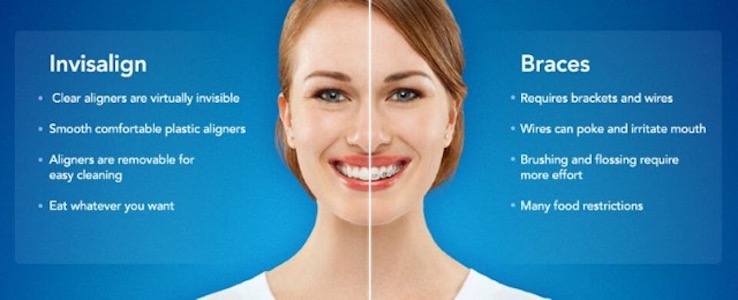
Which is Better, Invisalign or Braces Treatment Options?
| Feature | Invisalign | Traditional Braces |
| Average Cost | $3,000 – $9,000 | $2,500 – $7,500 |
| Treatment Time | 12 – 18 months | 18 months – 3 years |
| Visibility | Nearly invisible | Visible metal or ceramic brackets |
| Removability | Removable for eating and cleaning | Fixed to teeth |
| Effectiveness for Simple Cases | Excellent for mild to moderate issues | Effective for all cases |
| Effectiveness for Complex Cases | Limited effectiveness | Highly effective |
| Comfort | Generally more comfortable | Initial discomfort, potential for irritation |
| Oral Hygiene | Easier to maintain | More challenging, requires special tools |
| Food Restrictions | No restrictions (removable) | Some restrictions to avoid damage |
| Office Visits | Every 4-8 weeks | Every 4 weeks |
MAKE AN APPOINTMENT
Advantages vs. Disadvantages of Metal Braces and Invisalign Clear Aligner Treatment
Invisalign’s Selling Points and Shortcomings
Invisalign’s main allure shines through its near-invisibility, earning high marks for aesthetics. No metal brackets or wires to disrupt your smile here! Plus, they come with the convenience of being removable, making meal times and dental hygiene less of a hassle. They can even boast a potentially faster route to teeth-straightening success, given that you wear them diligently.
However, perfection isn’t part of the package. Discipline is key, as neglecting to wear them for at least 22 hours daily could derail your progress. Also, the responsibility of keeping them safe and sound falls to you, and replacements for lost or damaged aligners could see your costs climb.
The Pros and Cons of Choosing Braces
Braces, tried and true in the orthodontics realm, reign supreme for handling complex dental predicaments. Whether it’s a stubborn overbite or a labyrinth of crooked teeth, braces get the job done with precision—offering versatility that can confront the most daunting of dental dramas.
Plus, there’s a style to suit everyone’s taste nowadays, from hardly noticeable ceramic to incognito lingual braces. And quite often, they boast a speedier alignment phase compared to Invisalign, especially in closing gaps.
Yet, the traditional approach does have its drawbacks. For the style-conscious, metal braces might feel like a fashion faux pas. Keeping your pearly whites pristine also becomes trickier, as brushing and flossing morph into an art form. Dietary restrictions apply too—farewell, sticky and hard snacks! And let’s not forget those regular orthodontist date nights to keep things tightening along.
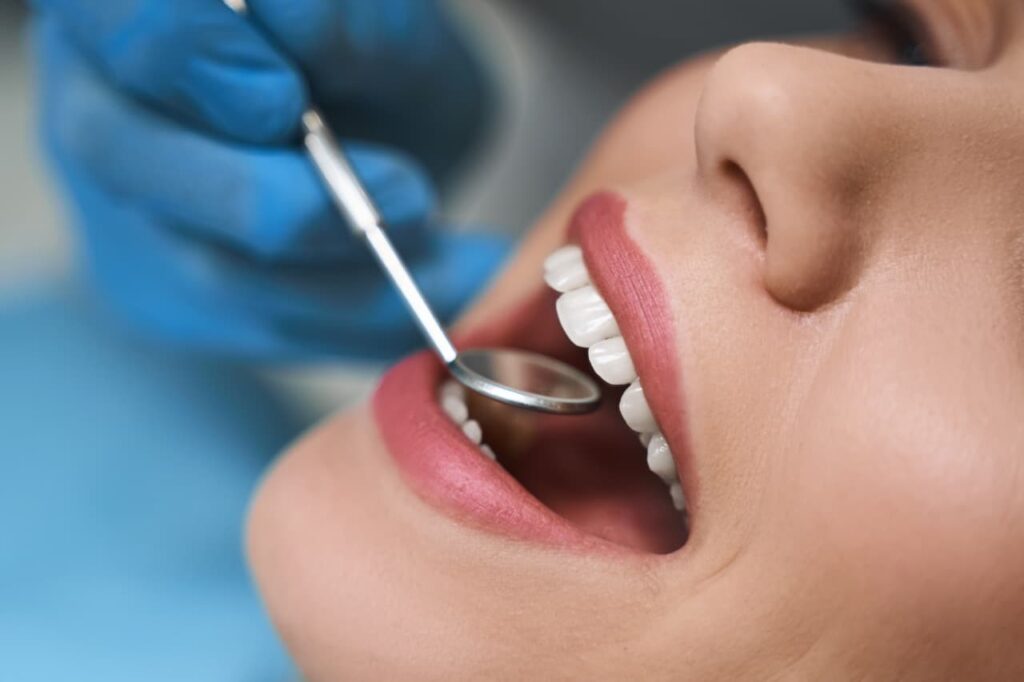
Effectiveness: Age and Complexity Factors in Treatment Choice
The best age to introduce kids to orthodontic treatments like braces tends to be around 7 to 14 years old when their mouths are still growing and teeth are easier to manipulate. Braces are typically the go-to, especially when complex dental work is needed, as kids’ teeth can often require serious shifting only sturdy traditional braces can handle.
Invisalign, while suitable for teenagers and adults, often isn’t recommended for children. It demands a level of responsibility and discipline that younger individuals might not be ready for—like keeping track of and cleaning their aligners.
When it comes to complexity, braces are the undisputed champions for intricate cases. From extreme overcrowding to jaw misalignment, those metal wizards work tirelessly to straighten things out. On the flip side, Invisalign is better suited for mild to moderate issues—think minor crowding or spacing quibbles.
Costs of Invisalign vs. Braces
Traditional Metal Braces Cost in Los Angeles
Depending on the complexity of your dental needs, expect the cost to oscillate between $4,000 and $6,000, a price that includes all the necessary appointments and adjustments. Dental insurance often plays a friendly role in this financial tale, offering varying degrees of coverage that can significantly lower out-of-pocket expenses.
Invisalign Cost in Los Angeles
If you’re in Los Angeles considering Invisalign, your wallet might feel the tug anywhere from $4,000 to $7,500. Factors fueling these figures range from the extent of teeth movement needed to the orthodontist’s cachet. Insurance coverage for Invisalign can vary just as it does for traditional braces, often depending on whether your plan considers it a cosmetic choice or a necessity.
Does Invisalign Cost Less than Braces?
Inquiring minds often wonder, does Invisalign maintain a cost advantage over braces? The truth lies in the balance. Initially, you might find Invisalign and braces competing neck-and-neck cost-wise in the Los Angeles scene. However, additional factors could tip the scales. Switching up treatment plans or replacing a lost aligner can stealthily creep up Invisalign’s price.
Conversely, braces tend to have a more predictable cost trajectory, with fewer surprises along the way. But remember, the final tally for either option isn’t just about the device; it’s also about achieving the winning smile you’re aiming for. When making comparisons, look beyond the dollar signs and consider the value they each offer in relation to your personal needs and goals.
| Treatment | Average Cost Range |
| Invisalign | $3,500 – $8,500 |
| Traditional Braces | $2,500 – $7,500 |
Invisalign-Specific Extra Costs
- Replacements for lost/broken aligners
- Additional refinements
- Replacement aligner sets
- Cleaning solutions for aligners
Traditional Braces-Specific Extra Costs
- Broken brackets/wires repair
- Rubber bands/ligatures replacement
- Orthodontic wax for sore spots
- Emergency bracket reattachment
Common Extra Costs for Both Treatments
- Initial consultation fees
- X-rays and diagnostic imaging
- Intraoral scans
- Follow-up appointments
- Retainers after treatment
- Deep cleaning (if required)
- Potential wisdom tooth removal
- Emergency appointment fees
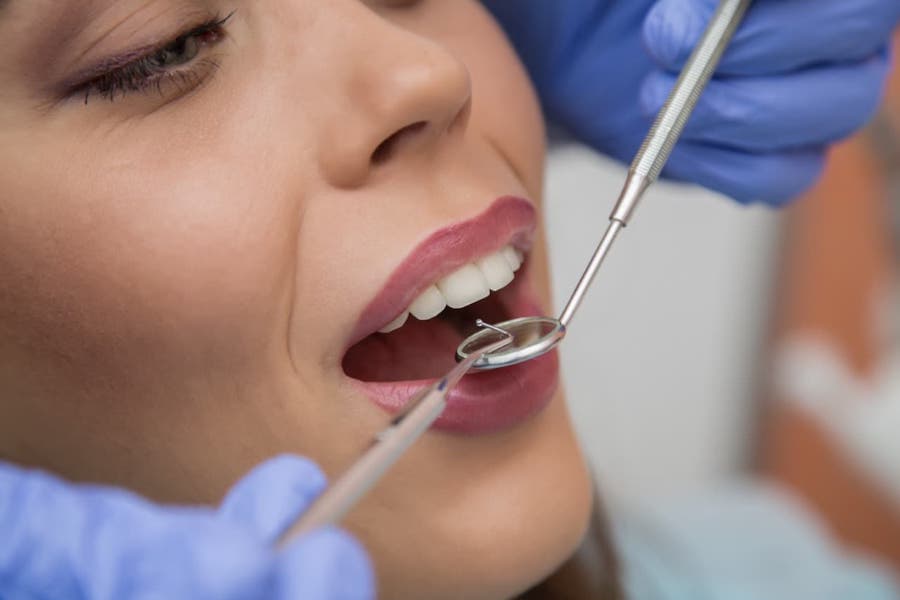
Expert Recommendations: What Do Top Los Angeles Dentists and Orthodontists Say
Los Angeles’ top dental connoisseurs echo a similar sentiment—consultation is king. Every mouth tells a unique story; therefore, expert opinions hinge on personalized evaluations. For Invisalign, they generally nod in approval for those seeking a less noticeable remedy with lifestyle flexibility, provided the orthodontic challenges aren’t too daunting.
For complex mazes of dental concerns, traditional braces receive a hearty endorsement. The experts recognize their unparalleled ability to navigate intricate pathways to alignment perfection. The consensus? Leverage professional advice tailored to your dental narrative, ensuring the chosen path aligns with both your aesthetic desires and functional needs.
MAKE AN APPOINTMENT
Braces vs Invisalign, Which Option is Right for You?
The ultimate decision—braces or Invisalign—hinges on a balanced blend of personal preference and practical considerations. If you value aesthetics and convenience, Invisalign might call to you. They’re less intrusive in daily life and when smiling for those inevitable selfies. But don’t forget, they require a high level of self-discipline.
For those with complex dental fixes or a penchant for a set-it-and-forget-it solution, traditional braces could be your champion. They labor around the clock with no need for removal, taking charge of transforming your smile.
Consider your priorities, talk with an orthodontist, and choose the path that aligns with your lifestyle, needs, and dental goals.
Answer the following questions to get a recommendation:
- How concerned are you about the visibility of your orthodontic treatment?
- A. Not concerned at all
- B. Very concerned, I prefer a discreet option
- How complex is your orthodontic case?
- A. Severe misalignment or bite issues
- B. Mild to moderate alignment issues
- Are you willing to make dietary changes during treatment?
- A. Yes, I can avoid certain foods
- B. No, I prefer no food restrictions
- How disciplined are you with following treatment instructions?
- A. I may need reminders and fixed appliances
- B. I’m very disciplined and can follow a strict wear schedule
- Is cost a primary concern for you?
- A. Yes, I’m looking for a more affordable option
- B. No, I’m willing to invest more for convenience
- Do you play contact sports regularly?
- A. Yes
- B. No
- How important is ease of oral hygiene during treatment?
- A. I’m willing to put in extra effort
- B. I prefer a simpler cleaning routine
- Are you comfortable with more frequent orthodontist visits?
- A. Yes, I can manage regular adjustments
- B. No, I prefer fewer in-office visits
Scoring:
- Mostly A’s: Traditional braces might be more suitable for you
- Mostly B’s: Invisalign might be a better fit for your needs
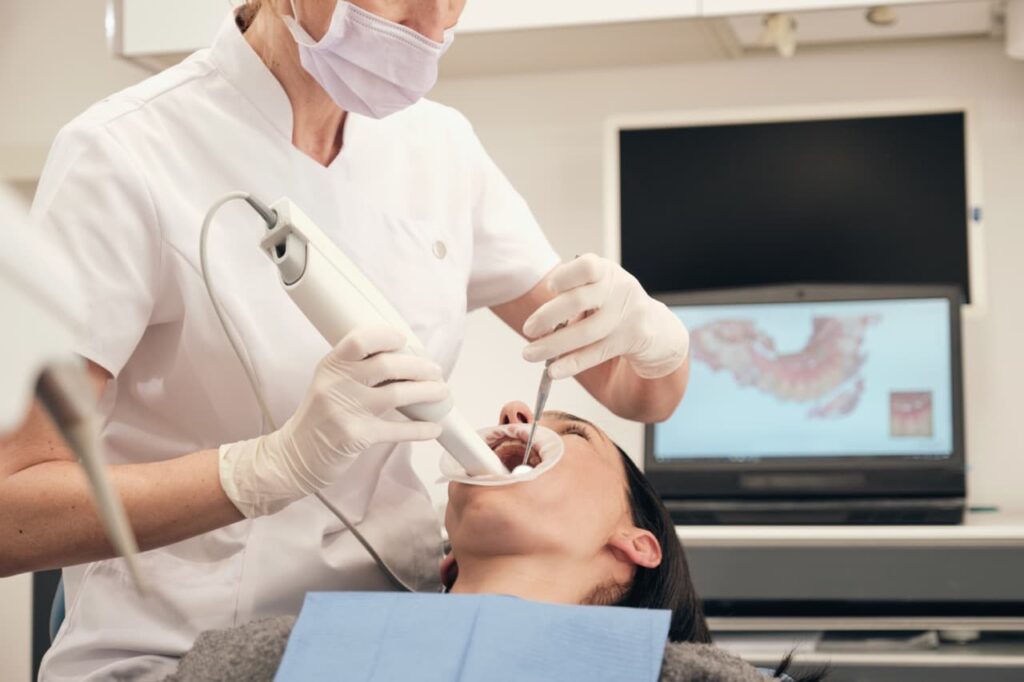
Alternatives to Invisalign and Metal Braces
Byte
Byte offers short, three-month treatment plans, a potential fit if you’re seeking fast results. And for those who cherish their nightly slumber without aligners, Byte provides a plan that only requires 10 hours of wear each night. Just note, these speedy options are typically for less complex cases.
Candid
Handling more complex cases than some competitors, they bring a personalized approach to the invisible aligners market. With a treatment cost of $2,400, Candid offers quality care at a competitive price point. Despite being cost-effective, they don’t skimp on professional oversight, guaranteeing that an orthodontist follows your case from start to finish.
SmileDirectClub
SmileDirectClub brings orthodontics to your abode, letting you craft that grin from the comfort of home or with a visit to their network of dental partners. They’re known for their customer-friendly policies, like the worry-free 30-day full refund, and the shine doesn’t stop there—a free teeth-whitening kit and Lifetime Smile Guarantee sweeten the deal.
With a price tag of $1,950 and financing options at the ready, SmileDirectClub positions itself as an accessible choice for teeth-straightening needs. Plus, many insurance companies are on board, providing coverage for these clear aligners, easing your financial concerns even further.
AlignerCo
AlignerCo shines as the wallet-friendly warrior in the invisible aligner market, presenting a tempting alternative for budget-savvy consumers. Priced between $1,145 and $1,345, their offerings are considerably more affordable than many competitors, cutting the financial worry out of your quest for aligned teeth.
Not only do they cater to your pocketbook, but also they don’t skimp on flexibility, providing both all-day and convenient nighttime-only options. While AlignerCo aligners are ideal for those with only minor straightening needs, they’re a beacon of fiscal hope for the frugal among us seeking a smile makeover.
Clear Correct
ClearCorrect aligners enter the arena as a blend of discretion and quality, hailed for their made-in-the-USA label. They’re a fantastic pick for those who need a balance of moderate price and a strong track record of fixing a range of orthodontic concerns, from the straightforward to the somewhat complex.
With transparent brackets and a tailor-made approach to each user’s dental profile, ClearCorrect aims to straighten and align with minimal visibility. While they may not be the household name that Invisalign is, they offer similar benefits, often at a lower cost and with a devoted following of dental professionals.
Sure Smile
SureSmile aligners enter the game with a tech-forward mantra, boasting precision driven by advanced 3D imaging and robotics. This technology aids in crafting custom aligners that target efficient movement brackets, promising a quicker journey to alignment. SureSmile’s claim to fame lies in their efficiency—often resulting in shorter treatment times compared to conventional methods.
Designed for a spectrum of orthodontic issues, they prove to be a formidable option for those seeking swift, effective teeth correction. Plus, they’re championed by dentists who value cutting-edge tools in their practice. While SureSmile might be a newcomer compared to giants like Invisalign, they’re definitely carving out their niche in the faster-smile lane.
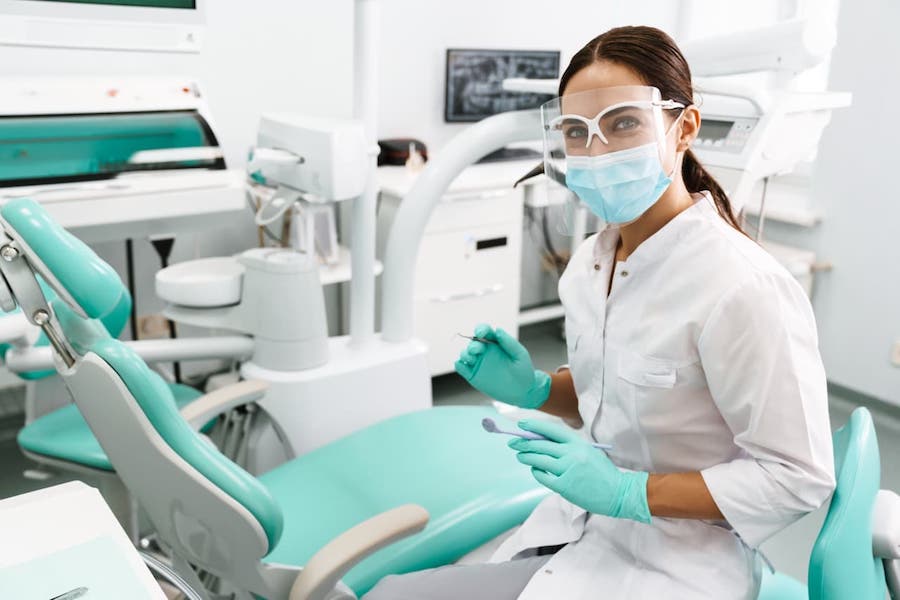
Our Los Angeles Orthodontist Location
Schedule an Appointment with the Best Orthodontics Clinic in Los Angeles
Ready to embark on a journey to your perfect smile in Los Angeles? Booking an appointment with our top-rated orthodontics clinic is your first pivotal step. Our orthodontic dental clinic combines expertise with a warm, patient-focused approach, ensuring comfort through every phase of treatment.
Whether considering Invisalign or traditional braces, choose a clinic that offers a comprehensive consultation to explore your options and craft a personalized plan. From discussing costs to addressing all your concerns, we make sure your smile goals become a shared vision. And with flexible online self-service scheduling, getting started on your dream smile has never been easier.
MAKE AN APPOINTMENT
FAQ: Answering Your Top Invisalign vs Braces Questions
Which Option is Better Suited for Severe Dental Issues?
For severe dental issues, traditional braces typically take the crown. They’re powerhouses when it comes to tackling pronounced misalignments or complex bite problems — a testament to their robust design and decades of proven effectiveness.
Can I Expect the Same Quality of Results with Invisalign as with Braces?
Absolutely! Invisalign and braces both aim for excellence in smile perfection. When it comes to minor to moderate corrections, Invisalign can deliver results on par with braces. However, traditional braces might be the better artist for more complex dental canvases.
How Do Invisalign and Braces Compare in Terms of Treatment Speed?
Invisalign may cross the finish line faster for many, averaging 12-18 months for treatment compared to braces’ 18-24 months. But this depends on wearing those aligners religiously and the complexity of your case. Braces work tirelessly around the clock, potentially making them faster for closing gaps.
Are There Any Hidden Costs I Should Be Aware Of?
Hidden costs can creep up! With Invisalign, additional aligners for complex adjustments or lost trays could hike up the price. Braces might introduce fees for broken brackets or emergency visits. Always inquire about the full cost spectrum before committing!
Will my Daily Life Be Significantly Impacted by My Choice of Orthodontic Treatment?
Your daily life will feel the ripple effect of your orthodontic choice. Invisalign offers the convenience of removable aligners, meaning fewer food restrictions and easier cleaning routines. Braces, while fussier at meal times and demanding more intricate oral care, ask for less daily management otherwise.
Broken Braces? What to do if a Bracket or Wire Breaks (Don’t Panic!)
If you’re facing a braces malfunction, keep calm. A broken wire or loose bracket isn’t the end of the world. Apply orthodontic wax to any poking parts to protect your mouth and call your orthodontist ASAP—they’ll guide you on the next steps to fix the hiccup without a hitch.
How to Fix an Overbite with Braces and How Long Does it Take?
Correcting an overbite with braces is a time-tested technique. On average, it might take anywhere from 18 months to a few years, depending on the overbite’s severity. Your orthodontist will tailor your braces to methodically move your teeth and jaw into harmony.
RECENT BLOG POSTS
- Invisalign Cost Los Angeles
- Invisalign Los Angeles
- Invisalign Express Cost
- Invisalign For Teenagers
- Invisalign Cost Bottom Teeth
- Invisalign For Gapped Teeth
- Orthodontist Los Angeles
- Cosmetic Dentistry
- Dental Implants Los Angeles
- Dental Veneers
Copyright © 2025 LA Dental Experts
